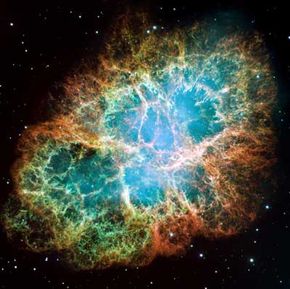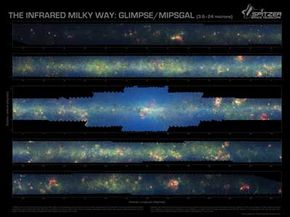Many hobbyists and professional photographers use film and digital cameras to take astrophotographs; and some enthusiasts are also using webcams and other types of video cameras. These photographers can mount and hook up recording instruments to different telescopes of varying magnification levels in order to improve imaging power. Telescopes and tripods also steady the devices for clearer images.
Other equipment can come in handy as well. Guide scopes and guiders help align your camera for long exposures as the Earth rotates. Timed remotes take the pressure off precisely timed long, multiple exposures. Telephoto lenses can make everything larger than life, so to speak, by increasing the size of the photographed object in the frame. And that's just a few of the pieces of equipment that can help to improve the quality of astrophotographs.
Equipment alone might not solve every challenge associated with astrophotography. For example, you must avoid interference from the turbulent atmosphere, airborne dust particles and moisture, light pollution and pesky insects. Also, you'll want a way to keep long exposures in focus as the Earth rotates. Experienced astrophotographers have discovered a few ways to overcome some of these obstacles, like creating handmade brackets that allow for the use of a shutter release cable (to improve camera stability). Many space enthusiasts offer tips on their own Web sites or through astrophotography publications (visit the links on the Lots More Information page to find some of these tips).
The trick to taking good astrophotographs is to overcome these obstacles, while experimenting with different shutter speeds and aperture settings at the same time. Since astrophotographs often depict faint objects, one of the main objectives is to get enough light in the shot. For extremely faint objects, the added goal is to get enough duplicates of that image in order to layer them together later. More of this is explained in How Photographic Film Works.
While astrophotographs are often taken with long shutter exposures, they can also be created by shooting many short exposures that are later combined. Once the images are taken, they can be layered with the use of computer software to provide clearer, more vivid composite photos. Often, astrophotographers must stack the images in order to get a high-quality finished product. Capturing multiple exposures is a fairly common technique for photographing events like eclipses. Astrophotographers take a wide-angle shot every few minutes to record the event's progression, and then have all the stages appear as one finished image.
Another interesting technique is to make use of the blurring that occurs because of Earth's rotation. These star trail images might portray a lunar eclipse as a color-changing, streaking blur or an entire star field circling a central hub.
Astrophotographs taken at observatories tend to be more sophisticated than amateur efforts. For example, take Hawaii's Keck Observatory. It has many supersensitive instruments that are busy collecting incredibly high-resolution images and spectrum analyses of objects all over the nighttime sky. Through its detailed pictures, Keck allows us to learn more about puny brown dwarfs, raging weather on Jupiter, super dense galaxies and other celestial happenings.
Needless to say, Keck's facilities aren't available for just anybody to use -- scientists must submit proposals that detail their project plans for consideration. Many smaller observatories, however, are open for public viewing on certain evenings. Also, there may be an astronomy club in your area that gets together for stargazing and astrophotography sessions.
Now that we've looked at what can be accomplished right here on terra firma with some commonplace gear or a trip to an observatory, let's see what the heavy hitters are looking at from above.


